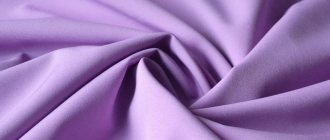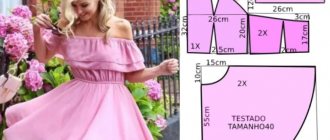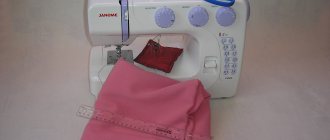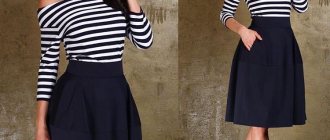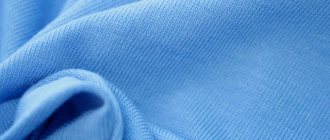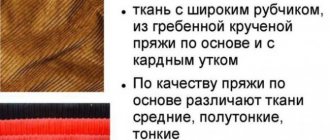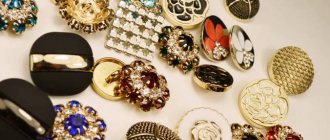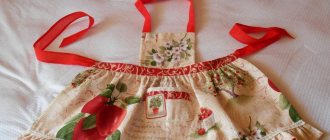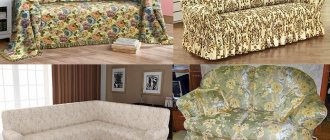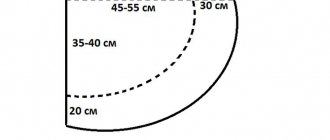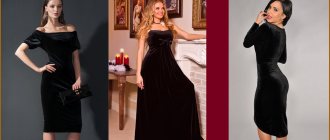History of appearance
Today, a bandana as a headdress is in every second wardrobe of modern young people. They are used to diversify and revitalize the appearance and protect from the sun. The exact time of appearance of the first models is unknown. We can assume that this was around the 18th century. It is unclear who invented this accessory. Initially, this wardrobe attribute was used to protect against dust and heat. For this reason, many researchers present the theory that the center of distribution of this accessory is India.
Handmade bandanas
If you translate this word from Hindi, it means tying. According to the translation provided by the Spanish dictionary, in Russian this word means the same thing. Traditional designs include a paisley pattern. These are different types of small curved water drops.
In Spanish settlements, this item was actively used by shepherds who worked in difficult circumstances. Later in the 18th century, one could notice the fashion for bandanas in the United States. There, wrapping a bandana around the neck became mandatory. They wore this product for protection from the sun and dust.
Interestingly, in the 90s, the accessory became an integral part of hippies and bandits’ equipment. Many bandits used it to hide their faces. They inherited this tradition from pirates, who, according to many movie directors, wore bandanas. According to sources, this version is a myth.
First headdress
Useful tips
Sewing a bandana can be greatly simplified and improved by following these tips:
- Measurements for making a bandana can be taken by wrapping the tape 1.5-2.5 cm above the eyebrows, slightly above the ears and at the point on the back of the head that protrudes the most. It is better to measure your head several times to avoid mistakes. Ideally, to correctly measure your head circumference, you can call someone for help. This way the result will be more accurate.
- If you are afraid that the bandana will fall off when worn, you can purchase an elastic band 1.5 cm wide in advance and, when cutting, leave space to sew in the elastic.
- A good idea is to wash the fabric before sewing the bandana. This will avoid further shrinkage of the material.
- Since children's bandanas require less material, they can be made from various leftover fabrics that can be found in any home. And characteristic decor will help give the headdress a more childish look.
- If the bandana is made as a gift to relatives and friends, then you can embroider with beautiful and dense threads the initials of the person to whom the headdress will be presented. This will make the bandana unique.
- Bandana is a universal headdress in hot sunny weather. Wearing a bandana on your head will protect both children and adult women and men from sunstroke. It is worth remembering that black fabric heats up more in summer, so in order to protect from the sun when sewing a bandana, give preference to light tones of the material.
- It is best to wash this item together with colored items. The mode should be selected based on the type of fabric. This will help preserve the product for many years to come. The cleanliness of your headdress is very important, because if you neglect it, there is a high chance of dandruff and quick greasy hair.
Material selection
At the moment, a bandana can be made from any material. Before sewing a product with your own hands, you need to decide on the density of the fabric. It can be dense or transparent material. The headband can be made from chintz, calico, cambric, or natural materials such as chiffon, silk and cotton. If the product is made for the autumn-winter season, then you need to focus on warm fleece.
You might be interested in: Making patterns and sewing dog beds
Cotton as main material
When choosing a fabric, you should also look at its color. Camouflage or denim looks interesting. It is worth giving preference to those materials that are combined with the top of the product. Regarding children's things, boys' bandanas will not suit girls and vice versa.
Made from knitwear
Types of bandanas for adults and children
A bandana can be represented by a scarf, a bandana with ties, with or without a visor.
Bandana scarf with elastic pattern
There is also a model in the form of a hat, a transformer and a bandeau. A scarf is a cotton square of calico, calico and cambric material. It can be 50 by 50 centimeters or 70 by 70 centimeters. It can also be presented in the form of a triangle.
Bondo head bandana men's pattern
Bandana with ties - triangular linen or cotton model. This is also a model made of kulirka and interlock. Can be made from fleece, suede, leather and fur. It can be presented with or without a visor. A bandana in the form of a cap is a regular round knitted summer model with or without ties.
With visor
Models of hats
To make a bandana, you need to know what types of scarves there are, what material they are made of, and how they can be decorated. Recently, popular designers have never ceased to amaze everyone with a huge range of products that differ in style, color and material . Basic models of dressings:
- Kerchief.
- Headdress with ties.
- Bando.
- Harmonic.
- Transformable scarf.
- Product with a visor.
All these models can be a great addition to your beautiful outfit. Sewing such hats will not be difficult.
Bandana pattern
It is not difficult to make such an element as a bandana pattern. This is a unique accessory, the patterns of which do not differ from the pattern for creating a cap or other round headdress. The pattern of the model for the summer, size and other details will depend on the type of model. Below are diagrams for creating a classic square army model for men, interesting life-size pirate products and headscarf models for women, and simple master classes for their formation.
Bandana pattern for men
Classic square bandana for men
To make a classic square men's bandana, you need to take a large piece of fabric with dimensions of at least 60 by 60 centimeters. Any material is suitable for cutting. You can use cotton muslin, which is abrasion-resistant. Next, you need to draw a square on the fabric using a regular stationery or meter tailor's ruler. Then draw a square 60 centimeters long. This parameter can be slightly increased or decreased in size.
It’s easier, before sewing a bandana pattern with your own hands according to step-by-step instructions, make a drawing of a square right on the corner of a fabric flap or an awl. This way you can avoid unnecessary trimmings. It is worth pointing out that marker lines do not need to be made in the case of permanent markers. The contours of the future square should not have an ideal shape, but straight lines can give the bandana a neat and tidy appearance.
You might be interested in this All about industrial sewing machines in production
Next you need to make a square pattern from fabric. The easiest way to initially make the cut is with sharp scissors. Then you need to try on the cut out headdress on your head. This stage involves fitting to inspect the size. If the bandana is large, it can be made smaller. It is imperative to process the fabric using a hemmed seam.
In the end, all that remains is to decorate the classic men's model. For example, a patch or machine embroidery is perfect for this. The registration emblem looks good on classic textiles. Be sure to iron the fabric thoroughly before decorating. Then the bandana pattern for a boy will be successful.
Basis for a classic square men's bandana
Women's headscarf
The women's headscarf is made using the same method as the men's classic bandana. You need to take a square cut of cotton or any other fabric and form a clear square with dimensions of 60 by 60 centimeters. Then make a line along the contour, forming a dart. Then try on the finished product by folding the fabric in half and tying it on the back of your head.
Basis for women's headscarf
Bandanas for babies
A bandana for a baby can be made like a simple women's headscarf or a regular men's classic model. You can also try making a model with a visor. To do this, you need to clearly form a pattern according to the template presented below, and carefully stitch it around the edges. Then you need to take the finished plastic model of the visor, cover it with fabric and carefully stitch all the protruding elements. At the end, connect the visor to the formed product and decorate as desired. To decorate a bandana for a baby, you can make a machine yourself or complement the product with machine embroidery.
Model for baby
How to sew a baby bandana
Model selection
Models of bandanas for children are very diverse. When choosing a bandana for a child, most parents prefer the following models:
- headscarf;
- transformable bandana;
- bandana with ties;
- various types of bandanas with a visor for sun protection.
It is best to choose the type of bandana taking into account the individual characteristics of the child. A bandana with ties is ideal for those children who often lose something due to high mobility. A hat with a visor will be the best option for those who live in hot climates and are often exposed to the scorching sun.
Materials, tools and equipment
To sew a bandana for a child, you need:
- textile;
- sewing machine or needle;
- threads in the color of the fabric;
- chalk;
- graph paper;
- scissors;
- pencil;
- ruler;
- elastic band (for a bandana with an elastic band);
- iron.
Recommended Fabrics
Children's summer hats should be made from light natural fabrics. Cotton and linen are perfect. It is better to choose fabric with different prints. This way the child will like the headdress more. The fabric market is so diverse that it’s easy to find material depicting your child’s favorite cartoon characters or simply a successful repeating pattern.
When selecting fabric, it is worth considering that it should not be thick. Preference should be given to breathable materials. They will help to avoid overheating of the heads, as a result, this will protect against sunstroke.
Measurements
When sewing a bandana for children, a number of factors should be taken into account:
- Gender of the child.
- Age, as children grow over the years, the bandana may become small.
- Interests of the child.
The average head circumference is about 45 – 50 cm. In each case, everything is individual and this should be taken into account. You can't do without using tape. It is best to add 5–10 cm to these parameters, in case of hemming edges and minor errors.
Pattern
For straighter seams, it is best to first make a pattern on graph paper. On it you need to sketch out the dimensions of the future headdress. It is always necessary to leave a small distance for further processing of the edges of the product.
After the shape is outlined, you need to cut it out, and then transfer everything from paper to fabric with chalk. Then a bandana is cut from the fabric.
Step-by-step instruction
- Fabric should be purchased with a reserve for unforeseen circumstances. The excess can be cut off or used to make another bandana. The minimum size will be 100 cm by 100 cm. Any product begins with the choice of fabric. This is especially important for children so that they don’t get a headache. It is worth buying fabric with a small margin. A square of 70 cm by 70 cm will be quite sufficient for sewing.
- At this stage you will need a measuring tape. She needs to measure the circumference of the child's head. Knowing all the data and applying a special formula, you can find out the minimum parameters of the bandana.
- Many mistakes in further operations are made due to incorrect patterns. At this stage, a drawing of the future product with all the necessary parameters is formed.
- Length correction is a very important operation that follows immediately after cutting. About 5 cm is usually left to form the seams of the product.
- An important step is processing the edges. They should be formed using a zigzag seam. You can use threads of different colors to make this. This will be a great solution for a girl's bandana. If it is intended for a boy, then it is better to use threads that match the tone of the fabric.
- Finally, iron the product with an iron or steamer. This is necessary to give it a complete shape. You should choose the right temperature, which will depend on the characteristics of the fabric.
- It wouldn’t hurt to add some decorative details.
How to decorate a headdress
The decor of a children's bandana can be a great place for imagination. This can be great fun for a child if you work together to create a design.
For girls, the best decorative elements are:
- Bows.
- Flowers.
- Butterflies.
- Icons.
More suitable for boys:
- Stripes.
- Icons.
- Embroidery
These features will help develop a child’s sense of style and develop individuality.
Sewing a women's bandana with an elastic band
A women's bandana with an elastic band can be made like a hat or like a cap. In the first case, it is necessary to cut the fabric according to the presented diagram, carefully stitch the ends of the product so that no threads appear. Next, you need to make holes in the prepared pattern, put pins in them and insert a cord or elastic band into the product. At the end, as in previous cases, you can make a decorative finish or use several different types of fabrics.
You might be interested in How large-format prints are made on fabrics
Women's model with elastic band
Sewing a women's bandana with a visor
The female model with a visor can be made using a plastic blank or dense processed fabric. In the first case, it will be a high-quality model to protect the eyes and head from the sun, and the second will act as an interesting decorative object and perform only the function of protecting the head from overheating. In any situation, it is necessary to make a pattern for the product, sharpen it well, and then form the finished product. After drawing the parts and cutting them out, you need to carefully iron the workpieces and begin stitching.
If desired, an elastic band can be added to the bandana to change the size. Then the step-by-step stage of the work changes and looks like this: first, the final model is created with an allowance for the elastic, the elastic is inserted, and then the visor is made and sewn to the product.
Pattern of a female model with a visor
Types and features of tying
A bandana is a piece of material in the form of a square or triangle. The usual size of the piece is 60x60 cm, the triangular scarf is 1/2 square diagonally. For babies, a smaller square is used, taking into account the small size of the child's head. As a rule , a piece of fabric 50x50 cm or half of it diagonally is taken for a scarf.
This is the standard type of bandana. Its only feature is an originally tied knot, which can be located in the back of the head, on the side or on top.
Of particular importance is the fabric from which this item is made, as well as the presence of finishing and fittings. The style of the entire image as a whole can largely depend on this.
Previously, the choice of fabric for a bandana was more conservative; natural fabrics were most often used - cambric, linen, cotton fabric and knitwear. Now the range of fabrics for headscarves has expanded significantly, and their own stylistic features have emerged, which determine the choice of material for a particular look. For example, natural silk, batik, leather and high-quality leather substitutes, natural or artificial suede, fleece, stretch, fine-pile fur, and hand-knitted fabrics began to be used.
You can tie a bandana in various ways. They are worn on the head like a scarf, in the form of a headband or blindfold, in the form of small hats and tiaras.
Women tie their hair with it and braid it. Men, such as race car drivers, bikers and skiers, wear this item of clothing over their faces. People working in the Far North often use balaclavas to protect themselves from strong winds and frost.
The bandana has become a favorite item of clothing among young people, who use it even more democratically. They like to tie a scarf on their head, neck, wrist, and also wear it instead of a belt on their belt or decorate their handbags and backpacks with it. Here are the varieties of this headdress at the moment:
- Turban (or turban) . It can be both female and male. It is a special way of weaving a long strip of material on the head.
- Bando . Used for women in the form of a headband made of two or several twisted strips of fabric.
- Trumpet (or Buff) . Worn mostly by women. Most often this is a knitted sleeve that is worn over the head. It can be worn both on the neck and on the head.
- Bandana hat . Worn by both women and men. This is a sewing product with ties at the back of the head. It can be with or without a visor, with long ribbon ties, with a tightening cord, elastic band, snaps or buttons.
- Bonnet (helmet) . Only worn by women. This is a headdress in the form of a hood with a knitted elastic band in the neck area.
How to decorate
A bandana is a model that can be beautifully decorated using different materials. You may need additional beads, buttons, ribbons, openwork Swarovski beads, feathers, artificial flowers, clips, smooth and machine embroidery, sculptural items made of polymer clay, knitted inserts, miniature floral elements and other materials. Naturally, all of the listed decorative items can be used as desired.
As a rule, ribbons, brooches and beads are used to decorate a scarf or scarf. Stripes and stickers are often used on fabric. Models with a visor decorated with rhinestones or personalized embroidery in the very center look interesting. The option that looks stylish is when the scarf is designed in a patchwork style, that is, with the addition of various cotton materials and is literally created piece by piece.
Model decorated with a brooch
In general, you can make a headdress such as a bandana with your own hands from available materials, using only a ready-made diagram from the Internet and the simple step-by-step instructions given above.
Master class on making a product
Making a bandana with your own hands is simple and does not require knowledge of the fundamental principles of sewing and cutting. Some types of bandanas do not require sewing at all, just the ability to tie a knot beautifully and a little imagination. In order to make such a bandana, you need a square piece of material, a scarf or a rectangle - it depends on what model you need to make. To “train” your hand, just stand in front of the mirror for a while and conduct a master class on yourself.
But some bandana models still need to be cut and sewn. But this is also not difficult, you just need to correctly transfer the pattern onto the fabric and assemble the parts according to the diagram.
Here are some interesting, universal models of bandanas with your own hands, which even a non-professional can sew using patterns.
Cutting and assembly diagram, option No. 1 (can be with or without a visor).
Cutting and assembly diagram, option No. 2.
On the head for women
The women's head bandana, with generally accepted methods of wearing, is distinguished by a wide variety of styles and finishes. This, of course, gives a big advantage to the fair sex to look creative anywhere and at any time.
The choice of fabric for this accessory is unlimited and largely depends on the overall look, as well as on the place for which the woman is wearing it.
Beach, plein air, barbecue, tourism and travel, as well as going out into sophisticated society - the bandana can be used everywhere, in different styles, colors and ways of wearing. You can be absolutely sure that this piece of clothing will make your look romantic and creative anywhere.
Below is a pattern that will allow you to sew a bandana for women without any special professional sewing skills. The pattern of a bandana without a visor with tied ribbons at the back of the head (without seam allowances) is as follows:
For men and boys
A man's head bandana is always more discreet. When choosing a headdress, men are more conservative, but nevertheless they show ingenuity when they need to quickly cover their head or face. Knitted T-shirts and T-shirts, scarves, headscarves, scarves or even light summer jackets and shorts are used.
"Legionnaire", the headdress of a French company soldier.
The favorite model of men is the “pirate”. It can be sewn from either cotton fabric or soft leather or leatherette. The color and pattern of the fabric are of decisive importance; it must be black or dark. The “pirate” design can be different: with ties, cords, ribbons or elastic.
The pattern diagram for a men's pirate bandana looks like this.
To create a childish look
The opportunity to sew a bandana for a boy using a pattern is a great way for a mother to show all her accumulated creative potential, because every mother dreams of presenting her beloved baby in the most favorable light. And all it takes is desire, a little imagination, patience and, of course, time.
Pattern of a summer headdress for a child (possible for a boy or a girl) with a visor and drawstring.
Coffee tree pruning. What a coffee tree looks like: description of the plant
This model can be made with or without a visor. If a visor is planned, then the parts of the visor should be sealed with adhesive interlining.
The width can be chosen as desired. To assemble the drawstring, you can use a lace made from the main fabric, a ready-made braided shoe lace or an elastic band.
